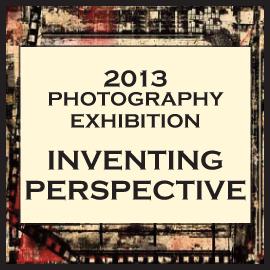
November 21 - December 13
Reception: November 21st 5 - 7pm
Exhibiting Artists (click on artist's name to view work)
Exhibition Awards
Matthew Derezinski ~ Best of Show
Heather Musto ~ 2nd Place
Shawn Michelle Smith ~ 3rd Place
Stephen Albair
David Antreasian
Neal W. Cox
Corey Davis
Maria Denzler
Hedi B. Desuyo
Toni Gentilli
Andrew Klc
Kent Krugh
Sita Mae
Russ Nordman
Dick Ott
Ron Testa
Benjamin Timpson
Kati Toivanen
Jill Van Hoogenstyn
Sasha vom Dorp

Corey Keller joined the San Francisco Museum of Modern Art (SFMOMA) in 1999 and held a number of positions before she was promoted to her current role as Curator of Photography in 2012. At SFMOMA, Keller organized the critically acclaimed exhibition Brought to Light: Photography and the Invisible, 1840–1900 (2008), which explored the use of photography in 19th-century science, considering in particular the representation of phenomena invisible to the naked eye. Accompanied by an award-winning catalogue, the show traveled to the Albertina Museum in Vienna, Austria. With SFMOMA curators Janet Bishop and Sarah Roberts, Keller co-organized the large-scale exhibition celebrating the museum’s 75th anniversary in 2010 as well as its accompanying major catalogue. She was instrumental in organizing the much discussed symposium Is Photography Over? (2010) and also participated as a panelist. Other exhibitions that Keller has curated include Henry Wessel (2006), and 1906 Earthquake: A Disaster in Pictures (2006). She also coordinated the San Francisco presentations of William Eggleston: Los Alamos (2005); Looking In: Robert Frank, and The Americans (2009); and Henri Cartier-Bresson: The Modern Century (2010), among others. She oversees Picturing Modernity, SFMOMA’s ongoing presentation of its world-class photography collection.
Most recently, Keller organized the major retrospective exhibition of photographer Francesca Woodman (2011), which traveled to the Solomon R. Guggenheim Museum in New York in 2012. In addition to her SFMOMA publications, Keller has contributed scholarly essays to the exhibition catalogues Helios: Eadweard Muybridge in a Time of Change (Corcoran Gallery of Art, 2010) and Jay DeFeo: A Retrospective (Whitney Museum of American Art, 2012). She will also oversee SFMOMA’s presentation—the premiering venue—of the Jay DeFeo Retrospective, which opens in November 2012.
Keller has been active at SFMOMA in a number of capacities. Prior to her current role, she was an associate curator in the museum’s photography department as well as an assistant curator. She also previously served as interim curatorial associate, co-organizing the exhibition Native to the Land: Photography of the North American Indian (2001), and as curatorial research intern, cataloguing the Paul and Prentice Sack Photographic Trust. Keller has also frequently lectured on photography as part of SFMOMA’s educational program and has taught at Stanford University, the San Francisco Art Institute, and the California College of the Arts.
From 1996 to 1998, Keller served as curatorial assistant in the Department of Photography at the Museum of Modern Art, New York, where she organized the exhibition Object & Abstraction: Contemporary Photographs (1997). From 1994 to 1996, Keller was senior curatorial assistant at the Whitney Museum of American Art, New York where she organized Ralph Gibson (1996) and assisted on exhibitions such as Florine Stettheimer: Manhattan Fantastica (1995) and Nan Goldin: I’ll be Your Mirror (1996).
Keller was a doctoral candidate in art history at Stanford University. Her dissertation is entitled The Look of Knowledge: Photographic Imagery and the Discourse of Science, 1839–1895. She received her master’s degree in art history from Stanford in 2001. She holds a bachelor’s degree in American studies from Yale University and attended Spéos (Paris Photographic Institute) from 1992 to 1994.
Juror's Statement
Photography not only records the world but also changes the way we see it. The artists whose work was selected for this show have all embraced this fundamental property of the medium. Though working in a wide variety of formats and styles, ranging from traditional black-and-white photographs to imagery that is heavily digitally manipulated, each artist has explored the transformative possibilities of the photographic image. In some cases, the simple choice of an unusual physical perspective is enough to jolt the viewer into a new mode of perception. In others, the image’s metamorphosis has been so profound as to nearly eradicate all evidence of the work’s photographic origins. Most importantly, however, each artist offers a distinctive point of view as well as an invitation to see.
At no other time in history has such a range of tools been available to the creative photographer. They are powerful, and seductive. Yet the desire –and the ability -- to manipulate the photographic image is as old as the medium itself. Since the nineteenth century photographers have simultaneously embraced and rebelled against the photograph’s tenacious ties to reality, creating provocative images that consequently help us understand the cultural ideals and fictions with which we have invested the photographic medium. Even a so-called straight photograph, one that appears to have described its subject without inflection, is an abstraction: a translation of a three-dimensional reality through the optics of the lens and the chemistry of the photographic process. The choices a photographer makes – where to stand, when to press the shutter, what to include within the frame, what to exclude, whether or not to use color, the format of the camera – all shape a perspective that is decidedly subjective. Extreme close-ups, multiple or long exposures, and digital manipulation are simply more extreme manifestations of these perhaps more traditionally accepted artistic choices. In making these choices, the artists included here draw attention to the photograph’s relationship to place, time, narrative, and memory. By pushing at the limits of the medium, they also consider and complicate the very definition of photography itself.
